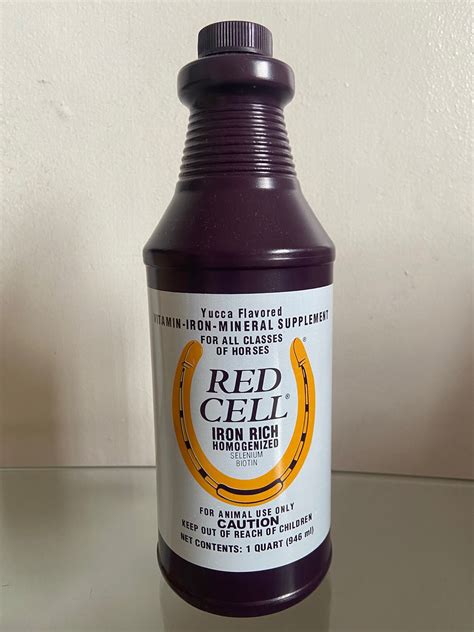Red Blood Cells: Essential Components of a Healthy Body
Introduction
Red blood cells (RBCs), also known as erythrocytes, are microscopic, disk-shaped cells that play a crucial role in our body's overall health and well-being. Their primary function is to transport oxygen from the lungs to tissues and organs throughout the body.
Red Blood Cell Structure and Composition
RBCs are composed primarily of hemoglobin, a protein that binds to oxygen molecules and enables their transport. These cells are enucleated, meaning they do not contain a nucleus, and are filled with a cytoplasm rich in hemoglobin. Their unique shape and lack of a nucleus provide maximum surface area for efficient oxygen exchange.
Red Blood Cell Production and Regulation
RBCs are produced in the bone marrow through a process called hematopoiesis. The hormone erythropoietin (EPO), produced by the kidneys in response to low oxygen levels, stimulates the production of RBCs. This process is essential for maintaining a healthy oxygen supply to the body's tissues.

Red Blood Cell Function
The primary function of RBCs is to transport oxygen to tissues and organs. Additionally, RBCs play a role in:

-
Carbon dioxide transport: RBCs carry carbon dioxide back to the lungs to be exhaled.
-
Acid-base balance: Hemoglobin helps buffer changes in pH levels.
-
Hormone transport: RBCs transport hormones such as thyroid hormones and steroids.
Red Blood Cell Disorders
Various disorders can affect RBCs, leading to anemia and other health problems. Some common disorders include:
-
Iron-deficiency anemia: Occurs when there is not enough iron in the body to produce hemoglobin.
-
Vitamin B12 deficiency anemia: Occurs when there is not enough vitamin B12 to produce RBCs.
-
Sickle cell anemia: An inherited disorder where RBCs become sickle-shaped and can block blood flow.
-
Thalassemia: An inherited disorder where the body produces an abnormal form of hemoglobin.
Red Blood Cell Disorders Diagnosis and Treatment
RBC disorders are typically diagnosed through blood tests. Treatment options vary depending on the underlying cause of the disorder and may include medications, blood transfusions, and lifestyle changes.
Maintaining Healthy Red Blood Cell Levels
To maintain healthy RBC levels, it is essential to:

- Consume a balanced diet rich in iron, vitamin B12, and other nutrients.
- Get regular exercise, which stimulates RBC production.
-
Avoid smoking and excessive alcohol consumption.
-
Manage chronic diseases, such as diabetes and kidney disease, which can affect RBC production.
Stories and What We Learn
Story 1: A 25-year-old woman experienced fatigue, shortness of breath, and pale skin. Blood tests revealed iron deficiency anemia due to inadequate iron intake. She was advised to take iron supplements andに変更に変更変更 her diet to address the iron deficiency.

Lesson: The importance of consuming a diet rich in iron to prevent anemia.
Story 2: A 60-year-old man with a history of kidney disease was diagnosed with anemia. Tests indicated low EPO levels, which was stimulating insufficient RBC production. He received EPO injections to increase RBC production and improve his oxygen levels.
Lesson: The role of erythropoietin in stimulating RBC production and the impact of chronic diseases on RBC health.
Story 3: A 30-year-old endurance athlete experienced shortness of breath and fatigue after intense exercise. Blood tests showed increased levels of RBCs, indicating erythrocytosis. Further tests revealed an underlying heart condition that was causing inadequate oxygen delivery to tissues.
Lesson: While having higher RBC levels can be beneficial for endurance athletes, it is essential to rule out any underlying medical conditions that may be causing erythrocytosis.
Common Mistakes to Avoid
-
Self-treating anemia: Without proper diagnosis, self-medicating for anemia can be dangerous.
-
Overconsuming iron: Excessive iron intake can lead to iron overload and other health problems.
-
Ignoring symptoms: Anemia is not always obvious, but persistent fatigue, shortness of breath, and paleness should be evaluated by a healthcare professional.
Step-by-Step Approach to Maintaining Healthy Red Blood Cells
-
Consume a healthy diet: Include foods rich in iron, vitamin B12, and folate.
-
Get regular exercise: Engage in physical activity to stimulate RBC production.
-
Quit smoking and limit alcohol: These habits can damage RBCs.
-
Manage chronic diseases: Seek proper treatment for underlying health conditions that can affect RBC production.
-
Get regular blood tests: Monitor RBC levels and overall blood health.
Conclusion
Red blood cells are vital components of our body's circulatory system, responsible for transporting oxygen and nutrients to tissues and organs. Maintaining healthy RBC levels is essential for overall health and well-being. By following a balanced diet, exercising regularly, and managing chronic diseases, we can support healthy RBC production and function. If you experience any symptoms of anemia or other RBC disorders, consult a healthcare professional for proper diagnosis and treatment.
Tables
Table 1: Normal Red Blood Cell Values
| Parameter |
Men |
Women |
| RBC count |
4.5-5.9 million/μL |
4.1-5.1 million/μL |
| Hemoglobin |
13.5-17.5 g/dL |
12-15.5 g/dL |
| Hematocrit |
40-52% |
36-46% |
Table 2: Foods Rich in Iron
| Food |
Amount |
Iron (mg) |
| Red meat |
3 oz |
2.7 |
| Spinach |
1 cup |
3.6 |
| Lentils |
1/2 cup |
3.3 |
| Black beans |
1/2 cup |
3.1 |
| Fortified cereals |
1 serving |
1.5-2.5 |
Table 3: Symptoms of Anemia
| Symptom |
Severity |
| Fatigue |
Mild to severe |
| Shortness of breath |
Mild to severe |
| Paleness |
Mild to severe |
| Dizziness |
Mild to severe |
| Headache |
Mild to moderate |
| Cold hands and feet |
Mild to moderate |
| Rapid heartbeat |
Mild to moderate |
